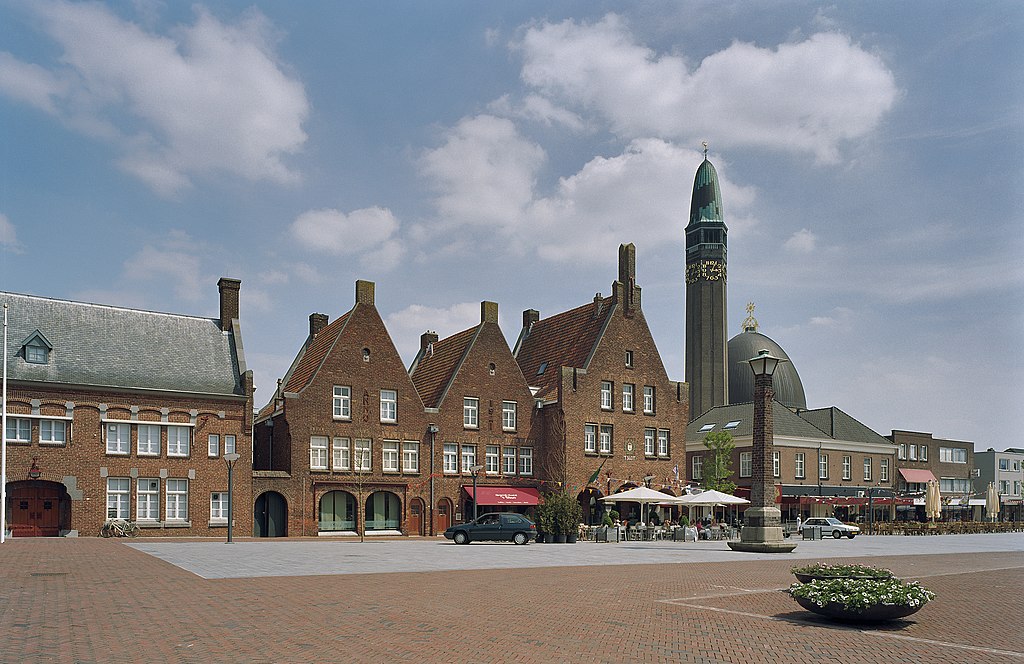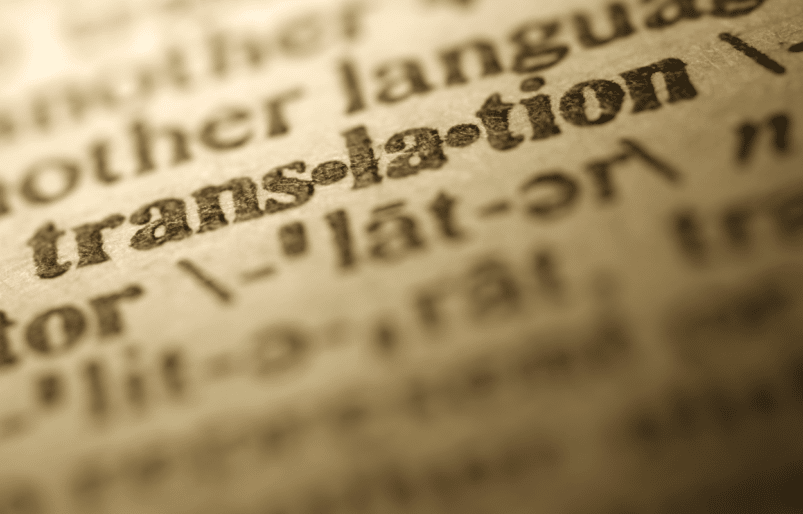Heritage is never a straightforward story, and heritage professionals put a lot of time and energy into constructing nuanced histories. But what happens when you want to tell careful narratives to people who don’t speak your language? It’s Julia van Duijvenvoorde’s job as a freelance heritage translator to make sure the translations make sense and don’t end up on the internet as bizarre mistakes.

“When you use the word [heritage], that opens up a different world vision and then a different vision of heritage as well”, says Julia. The difference in worldview is something she has experienced first-hand. She grew up bilingual in French and English. She also picked up German from a young age, while developing it further during her studies in Berlin.
Now after living and working in the Netherlands for four years, adding Dutch to her linguistic talents, she is starting a PhD in partnership with Vrije Universiteit in Amsterdam and Heidelberg University in Germany.
Julia began her own heritage translation company at the beginning of the 2020 pandemic, and since then has worked on nearly 20 translation projects, mostly in the Netherlands. Sometimes, it’s only a few paragraphs, but in other cases, she’s been tasked with entire exhibitions.
Where did this career path begin? “It became a hobby of mine to take pictures of ‘poor’ translations and think about ways to improve them”, Julia notes. While this may come across as humorous, it’s attached to very real issues. She was inspired by her Master’s degree in Amsterdam which showed her “how univocal, culturally insensitive and exclusionary many English exhibition translations are in the Netherlands.” The economic situation when she graduated was also a concern, with opportunities few and far between for heritage graduates in 2020. Translation became one of the few ways in which she could have a fulfilling and useful job in a sector that suffered greatly during the early months of a pandemic.
Who’s speaking?
To translate heritage narratives into another language is no easy task, but Julia is optimistic. “I think it is possible. But it’s never going to be perfect and that’s okay”, she admits. “It’s nice to be aware of that and to be aware that there are a lot of different things you need to know before translating a heritage narrative into another language.” The acknowledgment that it will not be perfect might cause curators some concern, but it’s the cost of accessibility or international coverage.
Aside from language mastery, she starts her translations by figuring out what is actually being said: “you need to have a basic grasp of the topic you’re dealing with and the underlying biases.” Understanding heritage translations begins with knowledge and research, but also with people. “You have to be aware of who’s speaking about whom and for whom.”
Taking someone else’s narrative and shaping it into something equivalent is complex. “You have to translate from one world vision to another world vision, rather than from a sentence to another sentence”, Julia explains. We’ve all seen bizarre literal translations that turn out as nonsense, and it’s even more important when it comes to heritage. Julia notes that this is reflected in heritage institutions when they commission translations: “You really see a difference between the heritage fields and their relationship to translation and other fields.”

At the Limburgs Museum in Venlo, she was working on texts that reflected the contested nature of the border region. Throughout history, various countries, empires, and monarchies have claimed the area, giving cities like Maastricht and Venlo complicated narratives. When dealing with “really major players in French and Dutch history”, the translations have to carefully reflect the political topic. Her education taught her to try to grasp “by whom, for whom and about whom [text] is written”, and the complex histories explored at the Limburgs Museum really put that in context.
I don’t pretend that my work is going to be perfect
But writing down translations for the museum wasn’t just tricky because of the narratives presented in the texts: “they already had someone else translate it into French. And so they just sent me the two versions saying: ‘hey, can you translate this into English?'” Being armed with both the Dutch and the French versions proved more complicated than expected. “I was going back and forth between the Dutch version, the French version, and my English version”, she sighs. “If you look too much at the French version, then you dilute the original Dutch text too much.”
Not on her own
Because of these conflicting narratives, clashing worldviews and different languages, Julia mentions that she doesn’t work entirely alone. “I always worked with an editor”, Julia says. “I think it’s important that you get another pair of eyes to look over your work.” There are a few other people who she works with as well. Often she lets others check her translations. This is an important part of the process, since in heritage there’s no easy translation. And the results require careful craft from multiple people – even if the end product won’t be “perfect”. Nevertheless, she has to make sure the curator will be happy – especially if they can read and understand her translations.

During her first translation job at the National Archives in the Hague, she had already noticed just how many people in the Netherlands spoke at least two languages. It’s not limited to the Netherlands’ urban western provinces either; things are becoming more international across the country.
Take for example her translation work at the Leder & Schoenen Museum in Waalwijk in the more rural province of Brabant. Julia saw the museum’s assignment to translate almost every text into English as a typical sign of the times for the Netherlands. “The fact that they wanted their whole permanent exhibition to the utmost detail like this, even down to the smallest texts and descriptions. The fact that they wanted all of that in English is really telling that the Netherlands is just pretty much a bilingual country.”
But as soon as you go outside of Paris, there’s nothing. Nothing.
But despite speaking so many languages, Julia has not focused to find translation opportunities outside of the Netherlands. Aside from larger, international organisations like ICOM, she hasn’t noticed a large demand for heritage translations. “It’s an exception, I would say, at least in my experience”, she says. “In France, the big museums and big institutions always have their texts in a thousand different languages. But as soon as you go outside of Paris, there’s nothing. Nothing.”
Now, she’s backed away from her translation work to pursue academia. Still though, she sees opportunities in the field: “National parks barely have their text translated. Which I find sad because I love natural heritage and I think it’s really important, especially because Dutch landscapes can teach many countries a lot of things”, she hints. “Which is another conversation,” she adds slyly.
Julia’s translations can be seen at the Dutch Leather and Shoe Museum in Waalwijk, which reopened on the 28th June. If you’re interested in her other work, find out more at HeritageInTranslation.

